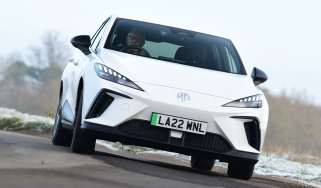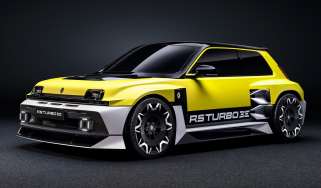Vauxhall Viva (2015-2019) review
The Vauxhall a well-equipped city car that represents good value, but there are better alternatives around

Smart looks, a generous kit list and low running costs count in the Vauxhall Viva’s favour, plus the optional IntelliLink touchscreen infotainment system is well ahead of rival set-ups. Yet while the Viva is easy to drive and park, it lacks the dynamic polish of some rivals and feels out of its depth away from the city.
Inside, the cabin is dark and drab in places, while space is reasonable, but not class leading – a Citigo or i10 offers more room for passengers and luggage. But the Viva is still far more accommodating than city cars of old.
On the road, the Vauxhall is exactly what most buyers would want from a city car: safe, predictable and easy to manoeuvre. It rides and handles reasonably well, too. But the steering is vague, there’s quite a lot of road noise and the sole petrol engine option feels sluggish out of town. The Viva is efficient and cheap to run, but there are more rounded city cars on sale.
The Vauxhall Viva and SUV-inspired Viva Rocks are the smallest cars for sale in the Vauxhall line-up, but not for much longer. 2019 sees the city car (which is known as the Opel Karl in Europe) dropped from the range, as Vauxhall seeks to rationalise its model line-up.
More reviews
It's not much of a surprise, because the Viva hasn't sold in big numbers, especially when compared with its 1960s and 1970s namesakes. And with a number of strong rivals in the class, the Viva was always fighting an uphill battle. Those rivals include class leaders such as the Skoda Citigo and SEAT Mii, plus the pricier VW up!, the Citroen C1, Peugeot 108 and Toyota Aygo trio, and cars such as the Hyundai i10, Kia Picanto and Suzuki Celerio.
The Viva was launched in 2015, and under the skin it uses running gear shared with then sister firm Chevrolet's Spark, a car that was discontinued in the UK in 2014. This tech was re-engineered for the Viva, although the traditional front-engine, front-wheel-drive layout in a five-door hatchback body remained. Engine choice is limited to a 71bhp 1.0 73PS three-cylinder petrol with a five-speed manual gearbox, while an auto was also offered for a while.
The initial model line-up comprised standard, SE and SL variants, while the Viva Rocks was added at a later date. This was the de facto flagship, so featured lots of kit as well as an 18mm taller ride height and chunky black plastic cladding to create a fake SUV, similar in concept to the Kia Picanto X-Line.
Electric mirrors, cruise control, a trip computer and central locking feature on all cars, although air conditioning was an option. The SE Nav adds Vauxhall's Intellilink 4.0 infotainment system with sat nav, it was a pricey addition new, but well worth seeking out on a used model, as it's one of the most hi-tech nav systems you'll find in this part of the market. SL models add climate control, a USB socket and Bluetooth phone connection, 15-inch alloy wheels and a leather-covered steering wheel.
For an alternative review of the latest Vauxhall Viva Hatchback visit our sister site carbuyer.co.uk








